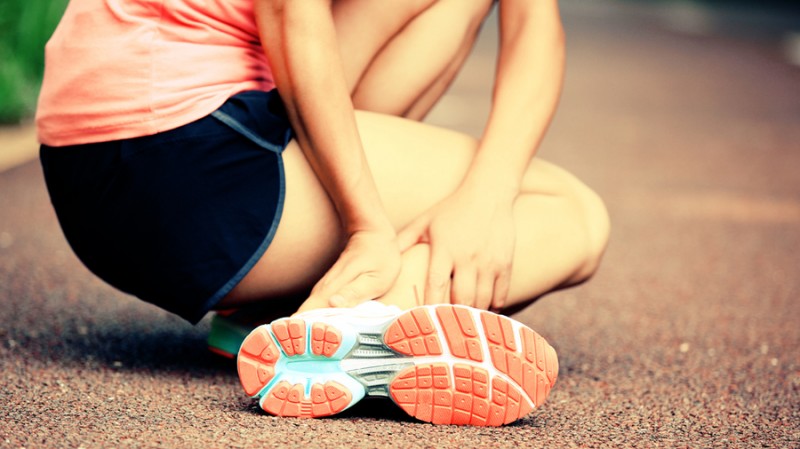
28 Feb 8 Golden Rules Of Injury Prevention For Runners
Injury prevention for runners needs to be a discipline well exercised. Being healthy is the foundation for sustainable performance and steady improvement.
When your body responds naturally and in a healthy way to higher demands in your training, you will be able not only to sustain but to improve your overall performance. When you utilize your near to highest potential and away from injuries, it becomes an enjoyable moment. And you will want more.
But be cautious and smart; sometimes we need to hold our horses. When injuries occur, a major step back can drain you physically and mentally. In other words, injuries are the number 1 enemy of runners, and prevention is the best medicine for it. This is a quick guide to help your injury prevention approach. Pay attention:
1. Flexibility
Flexible joints and muscles will require less energy to move through a wider range of motion, and will make your body more mobile to function with lower stress and more efficiently.
This all leads to a single fact: Flexible muscles reduce significantly the risk of injuries. Stretching will also increase blood flow and nutrient inflow, helping reduce the risk of tears in muscles tissue. A tight muscle is the last thing you need when running.

TIP: To begin your run, do mild stretching after a short quick jog of 5 minutes, or after a static warm up. For static warm ups you can do static running (5 sets x 20 reps each), and squatting (3 sets x 12 reps each). When you feel those legs slightly pumped, you can jump to mild stretching. You will also do (mild) stretching post workout, this will help release lactic acid, and keep your muscles flexed after your run for a better and faster recovery.
You might want to take a look at theses Stretching Straps for a highly effective stretching.
2. Give your muscles what they need
Your muscles are the main structures that support the movement of your body. Providing your muscles with the right nutrients to not only perform well, but recover, is key for any runner.
The number one macronutrient your muscles need is Protein. Protein is used in your body to build and repair tissue, being a key building block for bones, muscles, cartilage, skin, and blood. Protein is not stored by your body (unlike carbs and fats), so it is extremely important to supply your body with this key macronutrient.
Be cautious that you should not base your diet solely on Protein (so you don’t create Ketosis), but also carbs and healthy fats should be included. Carbs and fat are stored in your body through glycogen, and your body will eventually (as needed) get to these reservoirs to break them and create the energy you need to sustain physical demands. Include Proteins, Carbs, and healthy fats in your daily diet.

This Protein X-Protein Graham Cracker Ultra Premium is a high quality whey protein, and the best of it? its flavor!
You might like our Top 8 Foods Every Runner Should Take
3. Strength training
When runners undertake daily running routines (specially with no variation in condition or terrain), your body also develops weak areas in your muscles. These are areas where muscles are getting used to not being demanded as much as other muscles. This is why strength training is key. Maintaining proper functioning in legs, core, and hips is critical in order to make your running a more efficient process and lower the risk of injuries. Include at least one day of strength training per week as part of your training plan.

No time for the gym? The BodyBoss Home Gym is a fully portable gym for home or travel. This equipment is simply the best of its class.
Check here our Top 5 Strength Exercises For Runners
4. Rest day is a MUST
You need it. Muscles, tendons, bones, and your brain will thank you. Your tissues are banged up and will eventually tear if you don’t give yourself a break. Include a REST day as part of your training plan. This is a must to avoid injuries. Let your body rest and heal.

You might want to read the Benefits of Taking A Rest Day
5. Listen to your body
Being in the spree of training and wanting to improve sometimes will make you ignore the signals. This is particularly dangerous for those individuals wanting to improve at all costs.
Your body will tell you when to stop, and you need to listen.
Ignoring those signals will eventually and quickly end up in injuries. Signals such as mild soreness in bones, tendons, muscles, sometimes are overlooked by taking ‘the pill’. This is not good for runners wanting a sustainable running experience. Don’t ‘hide’ the signals, listen to your body and be smart. You will be able to enjoy more miles down the road.
6. Proper gear
Specially shoes that provide the right support and cushioning. Sometimes the difference is in the details, and we tend to forget it. Look out the outsole of your shoes, check the mileage, make sure they are still providing the support and cushion you need so they can be the shock absorbing factor, and not your bones and joints. This can make the difference between staying healthy or injured. Know when to replace your shoes and don’t wait for an injury to kick in.

You might want to add the additional cushioning that the Sof Sole Insoles can provide. This small change can reduce the impact of your stride in half.
Couple this with the Thorlos Experia padded socks and you will get the ultimate cushioning to relieve your joints from the impact that running can have.
You might like When is Time to Replace your Running Shoes
7. Good sleep
Your body and tissue regenerates while you sleep. Getting 8 hours of good sleep as a minimum is key for any runner since this is the time when your body will heal. If you are a runner, sleep is as important as everything else we’re mentioning in this post. Having trouble when going to sleep? Apply a relaxing routine (no tv or electronics before going to bed), get to bed early, and avoid heavy foods before going to bed. Good sleep is key for runners.

8. Adaptability and Progression
If you are looking to improve time, distance, or overall performance, adaptability and progression is key.
This means, whatever extra effort you demand from your body, your body will respond to it as long as the extra effort is not larger than the capacity of your body to respond in that moment.
You need to incorporate higher demands progressively into your training, so your body adapts and responds. You don’t need to jump to the new demands overnight. Take progressive steps, let your body adapt, and advance. This is key to avoiding injuries. Remember: train smart and stay healthy.

You might want to look at the Build Your Running Body . A book to guide you how your body can be maximized for running. A must read!
Remember, training smart and staying healthy will give you more miles down the road. Listen to the signals of your body, stop when is necessary. Give yourself at least one REST day per week to heal and recover. Your muscles and your brain will thank you.
Hope you enjoyed this quick read. Drop us a comment, we’d love to hear from.
Find and compare prices on the best running shoes. Atletikka.com

Sorry, the comment form is closed at this time.